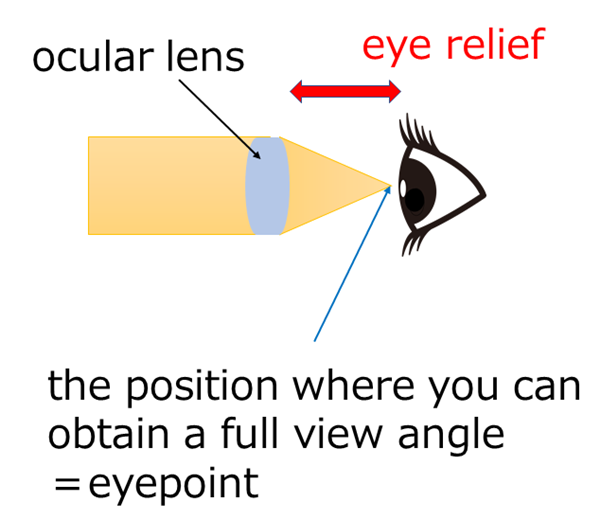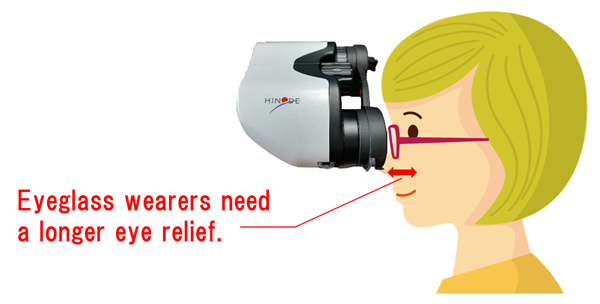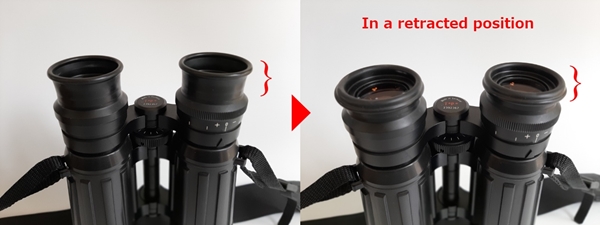I’d been an eyeglass wearer for many years until I had LASIK surgery about ten years ago. I had such poor eyesight that I couldn’t read without glasses.
In those days, when I used binoculars, I’d take my glasses off. This was because I didn’t like all the reflections from my glasses. My glasses were in the way, which was annoying.
Another reason is that I couldn’t get a full field of view with glasses. There was a shadow in the periphery, which was also very annoying.
One day, I took out my old binoculars and looked through them without glasses. I noticed that I could no longer focus, even at the infinity setting. The focusing knob wouldn’t turn anymore.
My eyesight was getting worse and exceeded the focusing range. So, instead of using the binoculars with my naked eyes, I reluctantly had to wear my glasses. Now, I couldn’t get a full field of view.
If you wear glasses and want to buy binoculars, read this first. With a little knowledge, you’ll be able to use binoculars comfortably, even if you wear glasses.
Contents
What happens when you use binoculars with glasses?
What happens when you use binoculars with glasses?
It’s easy to imagine that eyeglasses will get in the way since they are between the ocular lenses and your eyes. Because of this distance, two major problems occur; reflection and vignetting.

Normally, there are reflections on your glasses depending on the direction of the light.
The reflections can affect the contrast of an image. Although most glasses have anti-reflective coatings, you can still see some reflections. Dust or fingerprints also degrade the clarity of the image.
The best solution is to keep your glasses and binocular lenses clean. The cleaner your glasses, the clearer the image.
You might assume that taking off your glasses while using binoculars is the answer, however, there are other factors to consider. If your eyesight gets worse, it is likely that you won’t be able to focus on distant objects. In this case, you need to wear glasses with your binoculars.
Also, if you have astigmatism that is corrected with glasses, you won’t be able to get a sharp image, regardless of the distance of the object, without your glasses.
Therefore, some people need to wear glasses when they use binoculars. However, you might experience blackout (darkening in the periphery) when combining glasses with binoculars.

If the eye relief is too short, the blackout will occur.
To avoid this problem, you need to learn about eye relief.
How much eye relief is needed for glass wearers?
Let me explain what eye relief is.
First, have the binoculars eye-cups lightly touch your face. Next, slowly move the binoculars away from
you until you find the point where you can no longer see a full image.

This point is called the “eyepoint.” “Eye relief” is the distance between the ocular lens and the eyepoint.
Eye relief varies according to the optical design.
When you use binoculars with glasses, you need a longer eye relief because your eyes will be further
away from the ocular lenses.

Generally speaking, an eye relief of 15mm or more should be enough for most eyeglass wearers. You
can easily check the eye relief of any particular pair in the specifications.
If you are interested in buying a secondhand pair on an auction site such as eBay, be sure to check the eye relief. Older binoculars generally have shorter eye relief.
Eyecups: Fold up/down or twist-up/down eyecups?
Most eyeglass wearers need to twist or fold down the eyecups because the glasses take up the eye relief space. I highly recommend that eyeglass wearers choose the twist-up/down type of eyecups, instead of the fold-up/down type, for the following reasons.

Twist-up/down cups

Fold up/down cups
First, oils on the rubber eyecups (fold-up/down type) can stain your glasses especially if you share your binoculars with non-glasses wearers. You‘ll notice circle marks on your glasses after using them for a while.

Second, the height of the eyecups can be set to work perfectly for any user. You can hold binoculars steadiest when the eyecups lightly touch your face (see below).

Twist-up/down eyecups enable us to adjust the height more precisely so that they can lightly touch the
front of your glasses.

If there is space between the eyecups and your glasses (or face), your image will be shakier (see above). Of course, non-eyeglass wearers can also benefit from the accurate adjustment of the twist-up/down type.
In conclusion, if you want to use binoculars with your glasses, make sure that the eye relief is over
15mm and the pair has twist-up/down eyecups.
Summary
A frequently asked question is whether or not eyeglass wearers can use binoculars. The answer is; “Yes. But there are two important factors to consider.”
First, you have to choose binoculars with at least 15mm eye relief. With glasses between the ocular lenses and your eyes, you’ll need the extra space.
If the eye relief is not long enough, you‘ll get vignetting, which means you won’t be getting a full, clear view. Be sure to check the eye relief number in the specifications before buying a new pair.
Second, I highly recommend the twist-up/down eyecups if you wear glasses. They enable you to adjust the height precisely so that the eyecups can lightly touch your glasses. This will help to steady the binoculars.
Although some people have glasses to correct nearsightedness or astigmatism, they can use binoculars comfortably as long as they know about eye relief and eyecup types.
Recent binocular optical designs have become more compatible with eyeglass wearer and non-wearers
alike, so it is easier than ever to find a pair that is right for you.
